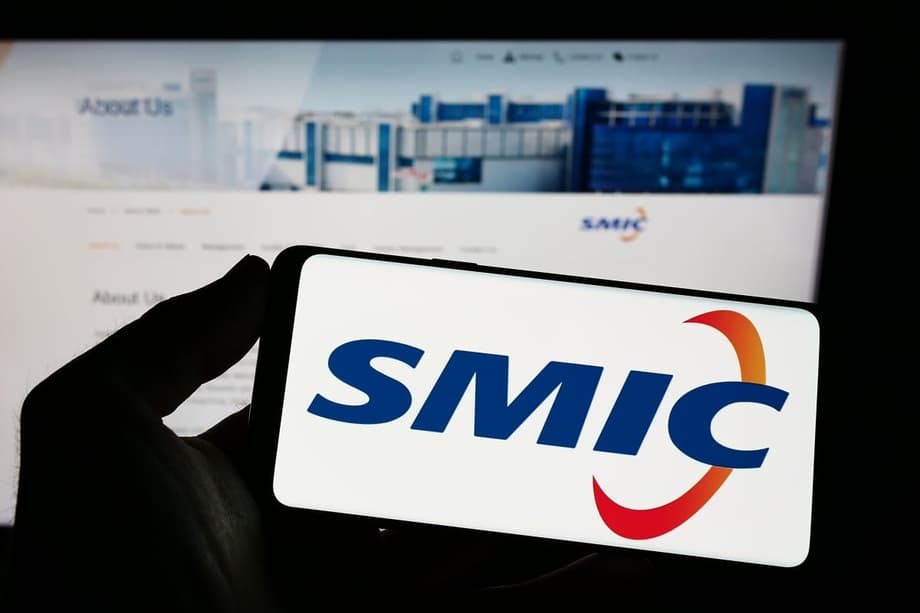A tighter chip market keeps SMIC near full capacity
China’s largest contract chipmaker, Semiconductor Manufacturing International Corporation, is on course to post the highest sales in its history, topping 9 billion dollars this year. Tight factory space across the industry and a surge in onshore orders from domestic chip designers are keeping SMIC’s fabs running close to full capacity. Management described a stronger than usual off season and a market where supply still trails demand. In the September quarter, revenue climbed to about 2.38 billion dollars, up 7.8 percent from the prior period and above guidance, while gross margin reached 22 percent. Monthly capacity rose to about 1,022,750 8 inch equivalent wafers, and the company ran at 95.8 percent utilization. The figures underscore how a persistent supply squeeze, combined with localization, has erased the normal lull and lifted throughput across SMIC’s factories.
SMIC is a pure play foundry, which means it manufactures chips to the specifications of other companies rather than selling its own chip brands. The bulk of its output sits at so called mature nodes, process generations like 28 nanometer, 40 nanometer, 65 nanometer and above that are essential for power management chips, display drivers, sensors, microcontrollers, networking chips and many automotive parts. These chips are everywhere, from home appliances to industrial robots to base stations. While SMIC trails the two global leaders in cutting edge processes, it has pushed the limits of older tools to produce some seven nanometer class parts for domestic customers.
The near term backdrop is complex. A shortage of memory chips, fueled by the build out of artificial intelligence data centers, has made some smartphone makers more cautious when they finalize production plans. Even so, SMIC expects sales to stay firm into year end. The company guided for flat to slight growth in the current quarter and said full year revenue is set to reach a new peak. Mainland customers account for the overwhelming share of revenue and the smartphone mix in the latest quarter edged lower, signaling a broader swing toward consumer devices and industrial orders.
Why revenue is surging now
Two forces are pulling in the same direction. Foundry capacity for mainstream nodes remains tight after years of under investment in the early 2010s, then a sudden spike in demand during the pandemic years. Automakers, industrial suppliers and device makers shifted to just in case inventories and longer supply agreements. The result is a floor under orders for analog and logic chips that are produced on the nodes where SMIC is strongest.
Localization inside China is the second force. Export controls on advanced tools and high end chips, along with extended delivery times for critical equipment, have pushed Chinese chip designers to move a larger share of their designs to domestic fabs. That shift can be slow because it requires redesigns and lengthy qualification cycles. Once it happens, it tends to stick, since the new supply chain reduces licensing risk and logistics complexity. This migration helps keep SMIC lines busy even when a single end market, like smartphones, softens.
What executives are saying
Co chief executive Zhao Haijun summarized the demand picture in clear terms on the latest call with investors.
Zhao said: “Our revenue is set to reach a new level.” He added: “Production remains in a state of supply falling short of demand.”
Zhao said the iterative effects across the supply chain are still playing out, which has created an unusually strong off season. He also flagged risks from a persistent memory shortage, which is prompting handset customers to be conservative when they schedule builds. Despite these headwinds, he said shipment volumes cannot meet all customer needs because production capacity is still limited.
Capacity, utilization and the build out
SMIC’s installed capacity crossed the one million mark in 8 inch equivalent wafers per month this year. Utilization sits near 96 percent. Wafer shipments in 2024 hit a record of roughly 8.02 million 8 inch equivalent units, with a rising share coming from 12 inch lines that now contribute more than three quarters of revenue. The company lifted capital spending to more than 54 billion yuan last year and kept research and development above 9 percent of revenue. Several new plants in Beijing, Shanghai and Shenzhen have been phased in to support sustained growth.
A key constraint is lithography. Advanced chips are built with extreme ultraviolet scanners, a technology SMIC cannot import under export controls from the United States, the Netherlands and Japan. To close the gap, SMIC relies on deep ultraviolet tools with complex multi patterning, which can reach the seven nanometer class for certain products but typically with lower yields and higher costs. The company has continued process development and has signaled plans to advance further, yet the lack of EUV keeps the cost structure heavier than at global peers.
Profit is under pressure despite record sales
Strong sales have not translated into peak profitability. The company reported a full year gross margin around 19 percent in 2024, down from pandemic era highs, and net profit for that year of a little more than 3.7 billion yuan, roughly half a billion dollars. Average selling prices declined in 2024 even as shipments reached new highs, reflecting a shift in mix and a more competitive pricing environment.
Price competition in the mature node market has intensified as Chinese foundries add capacity and defend share. Industry estimates suggest mature node wafers from mainland fabs are priced below rival regions by roughly one tenth. That is attractive to local customers, yet it crimps margins for the foundries. Analysts also point to the cost of producing seven nanometer class chips with deep ultraviolet tools for flagship phones as a drag on earnings, given lower yields and higher consumption of process steps.
Customers and product mix
SMIC remains heavily anchored in the domestic market. In the latest quarter, China accounted for about 86 percent of revenue. The smartphone share of sales slipped to roughly 21 to 22 percent, while consumer electronics rose as the largest end market in 2024. Computers and tablets were a smaller share, and industrial and automotive remained single digit slices of revenue. The mix also continues to tilt toward 12 inch wafers, which now represent around 77 percent of sales.
The memory cycle is a swing factor. Demand from artificial intelligence servers has pulled dynamic random access memory and high bandwidth memory onto allocation, which raises prices and affects the timing of handset launches and components sourcing. Handset makers have become more cautious with their purchase orders. Even with that caution, SMIC’s utilization rate remains high, which suggests that strength in consumer electronics, IoT devices, and power management is offsetting the softness in phones.
Geopolitics and supply chain effects
Export controls shape SMIC’s playing field. The United States placed the company on a trade list in 2020, and the Netherlands and Japan have aligned with licensing requirements for advanced lithography and other critical tools. That combination blocks EUV scanners and places strict conditions on many deep ultraviolet systems. Equipment lead times have stretched, and permit decisions can delay the ramp of new lines. This backdrop has turned localization into a business necessity for many Chinese chip designers and device makers.
Supply chain friction is not limited to tools. Corporate governance disputes around overseas subsidiaries, and scrutiny of cross border technology flows, add to the sense of instability. Companies across the industry are building regional buffers for materials and parts to reduce the risk of sudden interruptions. For SMIC, a stable domestic supply network and long term take or pay style contracts with anchor customers are emerging as moats in a more volatile environment.
The outlook for 2025
Management expects revenue growth in 2025 to outpace the industry average. Capital expenditures are projected to remain roughly flat with 2024 levels, around 7.3 billion dollars, as the company balances expansion with cash generation. Near term guidance calls for flat to low single digit growth into the December quarter, a sign that the supply demand balance remains tight.
Key variables to watch are memory pricing, the pace of domestic substitution and the intensity of price competition. A prolonged memory shortage keeps some smartphone builds on hold, although it supports inventory discipline across the handset supply chain. Domestic chip designers are moving more projects to SMIC, which should support fab loading. Price discipline will matter in mature nodes, where a wave of new capacity across China risks pushing the market toward oversupply if end demand does not keep up. Execution on yields for seven nanometer class lines will also influence profitability, given the heavier process costs without EUV.
What to Know
- SMIC expects full year revenue above 9 billion dollars as tight foundry capacity and localization lift demand.
- Third quarter revenue reached about 2.38 billion dollars, with a 22 percent gross margin.
- Installed capacity rose to roughly 1,022,750 8 inch equivalent wafers per month and utilization was 95.8 percent.
- China contributed about 86 percent of sales in the latest quarter, while the smartphone mix declined.
- Memory shortages tied to artificial intelligence data centers are making handset customers cautious.
- Profits remain pressured by higher costs for advanced nodes built without EUV and by price competition in mature nodes.
- Export controls restrict access to EUV tools, so SMIC relies on deep ultraviolet multi patterning for seven nanometer class chips.
- Capital spending is set to remain near 2024 levels and the company aims to grow faster than the industry in 2025.












